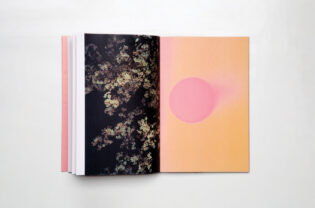Nicolas Ruel
Jasper Johns’ comment ‘‘how we see, and why we see the way we do’’ is aptly illustrated by the work of Montreal artist Nicolas Ruel, whose career path was affected by his childhood. ‘‘At school, I always loved geography,’’ he admits. His photographs of cities around the world show his innate esteem for the lands in which we live. His images also reveal his interest in movement. In the 1990s, photographing dancers for choreographer Marie Chouinard and acrobats for the Cirque du Soleil, he learnt how to play with the speed of the shutter to catch a moment in time. At the same time, Ruel was photographing interiors for an architectural publication. Today, these pooled influences have resulted in oeuvres, in which he uses his lens in a lyrical way. The photographs premiering at his recent retrospective, 42 Villes. 8 Secondes.12 Ans., at Galerie de Bellefeuille, revealed his respect for the formality of buildings—‘‘the solidity of their architecture’’—as well as his appreciation of movement. His work can be seen as a creative summation of yesterday, today and tomorrow. Ruel’s modern method of freezing time today, is also a story about yesterday. In 2004, he saw an exhibition on daguerreotypes in New York, and the rest, as they say, is history. An early form of photography, daguerreotypes were developed on an alloy, giving them a slightly silvered surface. Inspired, Ruel researched how he could re-create that appearance, and so started to experiment by printing on stainless steel. This futuristic high tech approach demanded high tech knowledge. His cutting-edge method is not only unique: it is striking. Usually, when a photograph is printed, the ‘white’ of the photo is simply the white of the paper—the background on which it is printed. With Ruel’s images the steel shines through, imparting a wonderful luminosity. This lightness of being is at the core of his work, enhancing the sense of movement captured through his slow shutter speed. Left open for 8 seconds, the lens captures what Ruel refers to as his ‘‘micro-métrage’’, a short film. There is movement, but it is frozen. His beautiful scenes of museums, churches and parks, are far more than a post card moment: you are there; you can feel the breeze. The artist creates his work with two “takes”: one shot in front, and then with the lens still open, another one nearby or behind him. The different scenes are then merged in Photoshop. He will ‘’never take a picture without having two subjects. The second image adds the depth.’’ In this, Ruel’s photographs have a slightly Cubist mood, showing different sides of the moment. His subtle explorations of time and space are somewhat melancholic. Moscow Subway 2004 speaks volumes about the speed—and loneliness—of city life. Moody blues permeate his scenes of Venice. Nicolas Ruel’s most recent work moved out of the streets and into a salon de couture in Paris. He was invited by the Maison Jean Paul Gaultier to photograph a retrospective of 20 years of the fashion designer’s collections. Nicolas’ photographs of glamorous gowns stand out against blurred impressions of the atelier’s 19th century building. Fragments of the interior architecture are used along with—and superimposed onto—the clothing. With his 8 second lens capture, moldings merge with hemlines; a solid staircase railing sets off the chic of chiffon. Using his signature timed exposure, the artist captured the elegance of a moment of ephemeral evanescence. The delicate couture pieces and images of the building’s classical architecture stand juxtaposed on the techno stainless steel on which the images are printed. A new “reality” is offered by Nicolas Ruel’s photographs. Their dream-like mood dissolves the boundaries of the everyday. Their magical realism suspends disbelief. His slow shots show movement—yet stand still. Like Proust’s remembrance of things past, they are a testament to his fascination with time and its passage. Ruel finishes his prints with the highest quality car varnish; a permanent glaze. This means that, unlike elusive memory, his work will never fade.
NICOLAS RUEL
Galerie de Bellefeuille, Montréal






